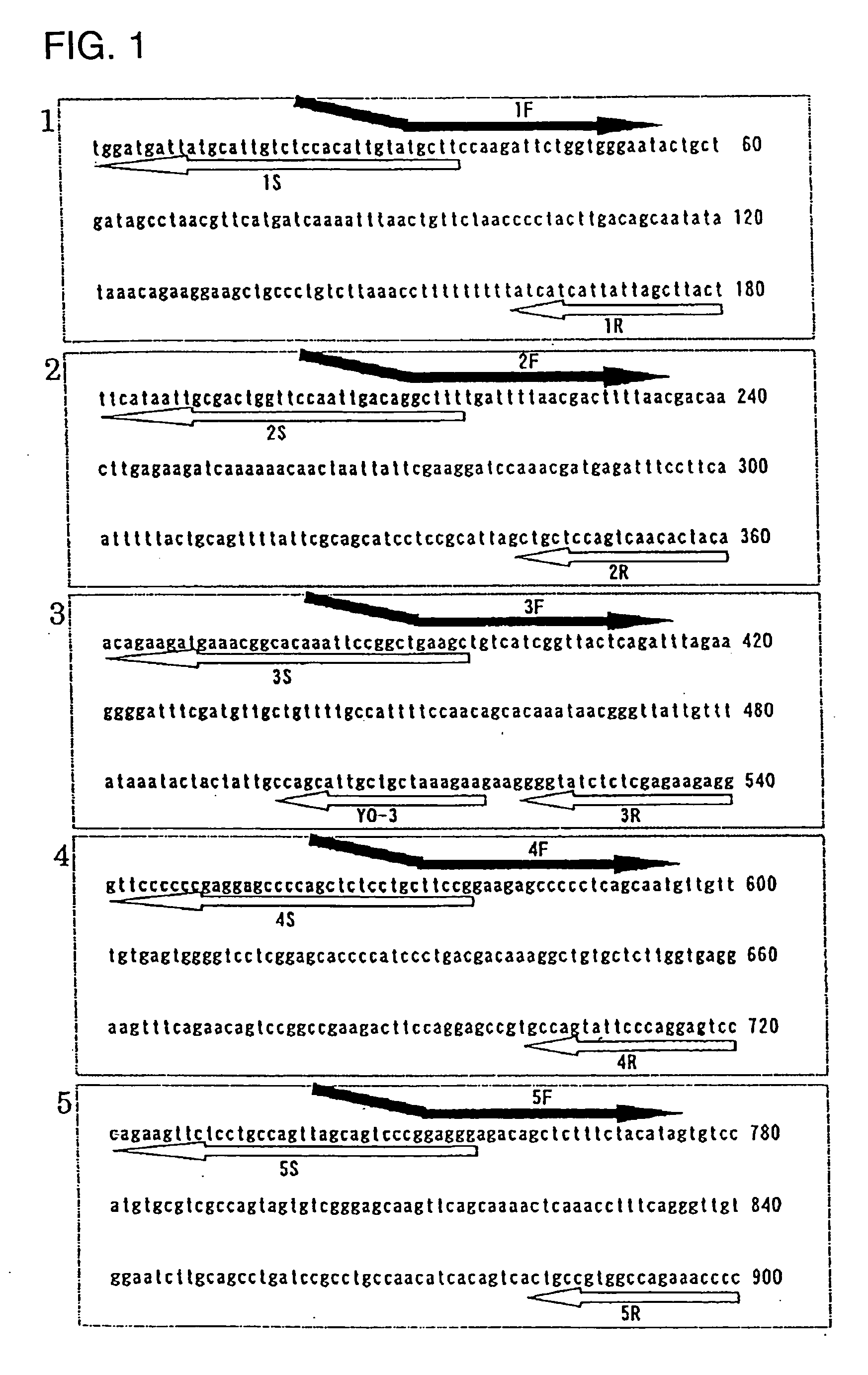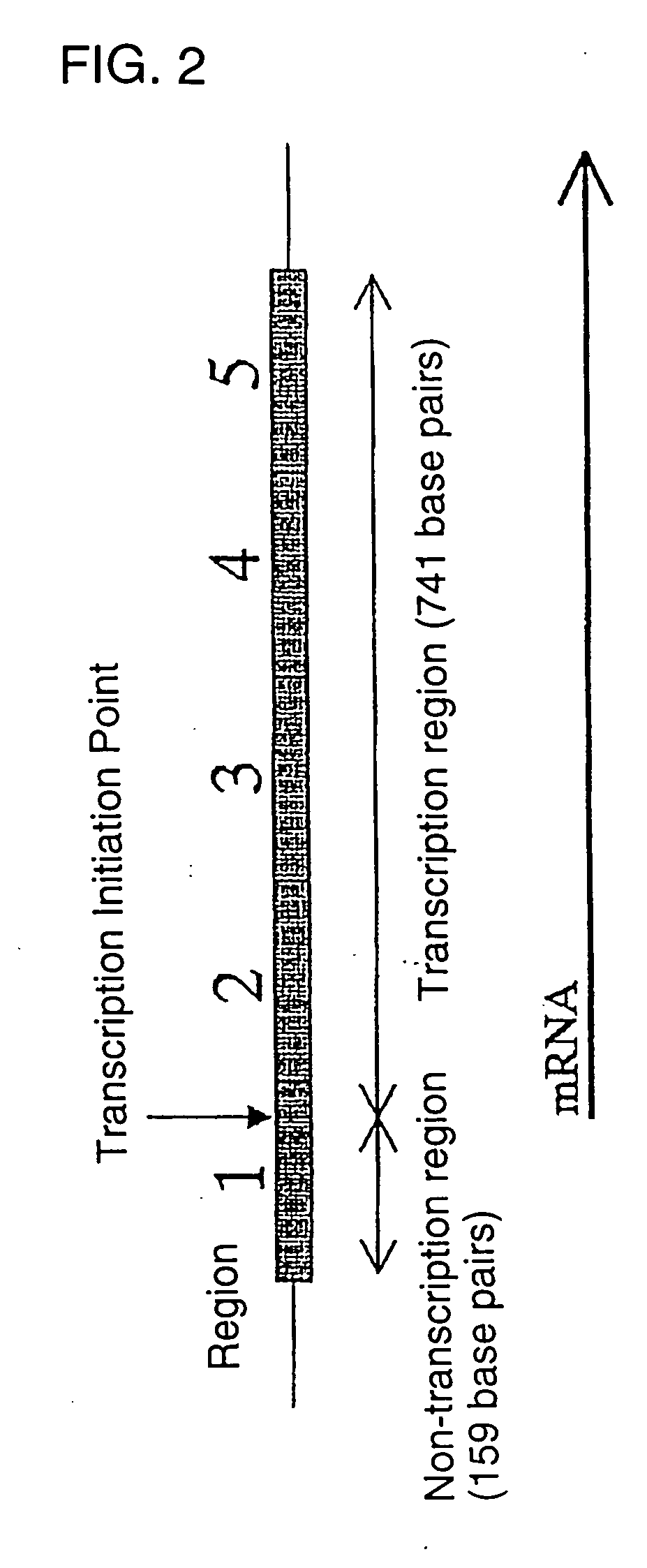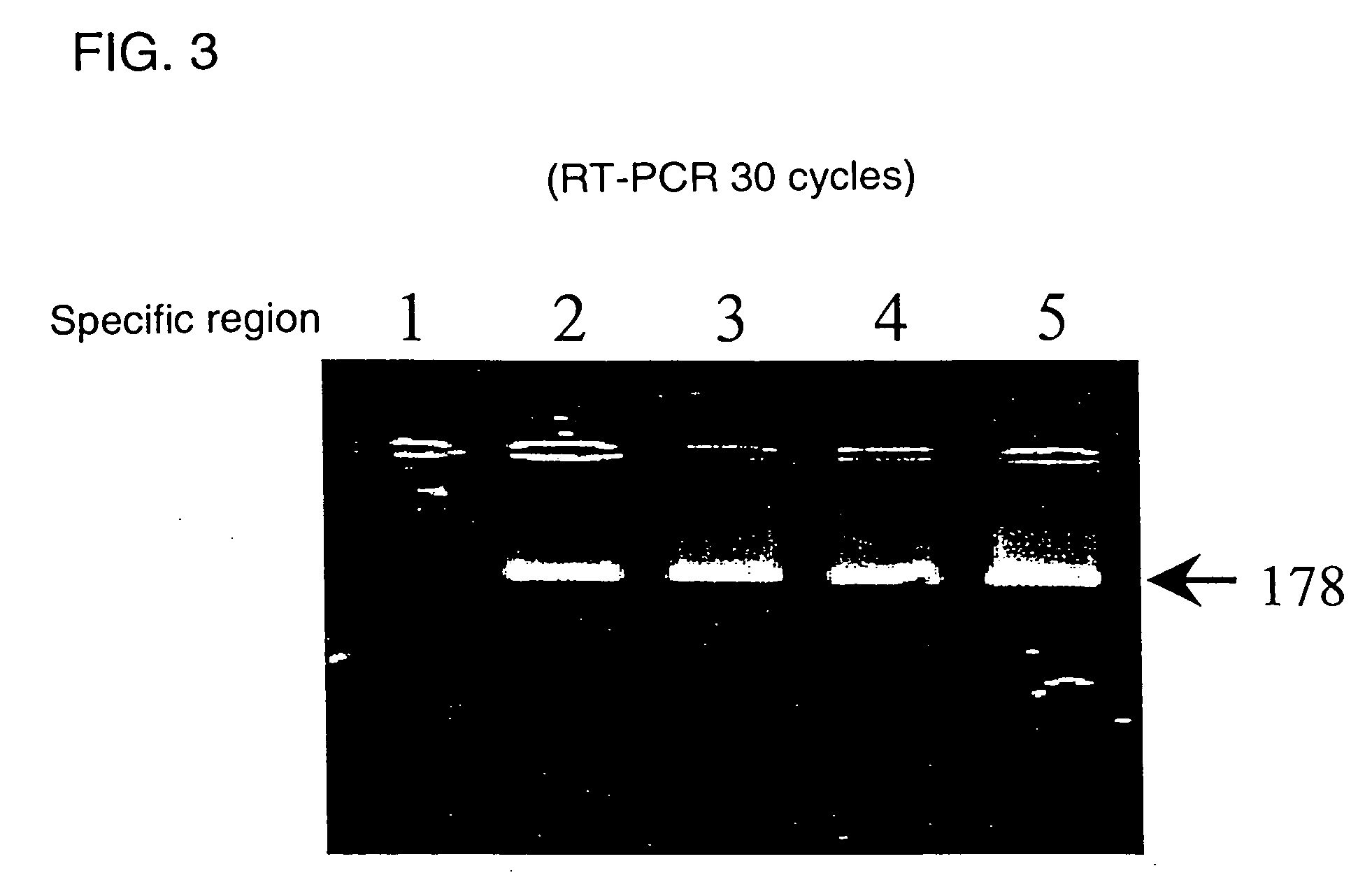Novel genome analyzing method
a genome and genome technology, applied in the field of new genome analyzing methods, can solve the problems of difficult identification, difficult discrimination, and extremely small probability of selecting rare cdna and subjecting it to nucleotide sequence determination
- Summary
- Abstract
- Description
- Claims
- Application Information
AI Technical Summary
Benefits of technology
Problems solved by technology
Method used
Image
Examples
example 1
[0040] Establishment of Regions
[0041] In order to show realization possibility of the gene expression region determination method provided by the invention, the following model test was carried out.
[0042] As the genomic region, a region composed of 900 base pairs prepared from a G1 strain, a genetically engineered transformed methanol assimilating yeast strain which has been established by the method described by the present inventors in Japanese Patent Application No. 11-188650, was selected. When induced by methanol, the G1 strain expresses a human IL-6R-IL-6 fusion protein composed of one polypeptide chain of 397 amino acid residues (cf., Japanese Patent Application No. 11-188650).
[0043] As shown in FIG. 1, the region composed of 900 base pairs was divided into five specific regions each having 180 base pairs. Also, mRNA expressing mode of the region already known from Japanese Patent Application No. 11-188650 is shown in FIG. 2. As is evident from FIGS. 1 and 2, the specific ...
example 2
[0045] Preparation of mRNA
[0046] An mRNA sample of the strain G1 was prepared by the following method.
[0047] The strain was inoculated into 3 ml of BMGY (Bacto Yeast Extract 10 g / l, Bacto Peptone 20 g / l, Yeast Nitrogen Base without amino acids 1.34 g / l, 100 mM potassium phosphate buffer, pH 6.0, glycerol 10 g / l and biotin 0.4 mg / l) medium, and cultured at 28° C. for 24 hours on a shaker.
[0048] A 100 μl portion of the culture broth was inoculated into 3 ml of BMGY (Bacto Yeast Extract 15 g / l, Bacto Peptone 30 g / l and other components having the same composition of the above BMGY) medium, and cultured at 28° C. for 16 hours.
[0049] After confirmation of the depletion of methanol, 100 μl of methanol was added to the medium to induce expression of the human IL-6R-IL-6 fusion protein. Two hours after the addition of methanol, the cells were collected and 5×107 of the cells were immediately frozen with liquid nitrogen.
[0050] They were subjected to cell wall lysis using a commercially ...
example 3
[0051] Determination of Gene Expression Region by DNA Amplification
[0052] Using the mRNA obtained in Example 2, examination was carried out on whether or not the DNA amplification is specific for a primer derived from a region composed solely of a gene expression region.
[0053] A commercially available kit (RT-PCR beads, mfd. by Amersham Pharmacia) was used in the RT-PCR.
[0054] That is, cDNA was synthesized from 200 ng of mRNA by a 15 minutes of reaction at 42° C. using oligo(dT) as a primer. Next, PCR reaction was carried out using the forward primer and reverse primer. Using a thermal cycler, a cycle composed of 95° C. for 1 minute, 55° C. for 1 minute and 72° C. for 2 minutes was repeated 30 cycles spending about 3 hours. Immediately after the reaction, an electrophoresis was carried out using 4% agarose which was then stained with SYBR Green.
[0055] As is evident from FIG. 3, amplification was not found by the primer originated from the specific region 1 but was found by the p...
PUM
| Property | Measurement | Unit |
|---|---|---|
| pH | aaaaa | aaaaa |
| fluorescence wavelength | aaaaa | aaaaa |
| fluorescence wavelength | aaaaa | aaaaa |
Abstract
Description
Claims
Application Information
 Login to View More
Login to View More - R&D
- Intellectual Property
- Life Sciences
- Materials
- Tech Scout
- Unparalleled Data Quality
- Higher Quality Content
- 60% Fewer Hallucinations
Browse by: Latest US Patents, China's latest patents, Technical Efficacy Thesaurus, Application Domain, Technology Topic, Popular Technical Reports.
© 2025 PatSnap. All rights reserved.Legal|Privacy policy|Modern Slavery Act Transparency Statement|Sitemap|About US| Contact US: help@patsnap.com



